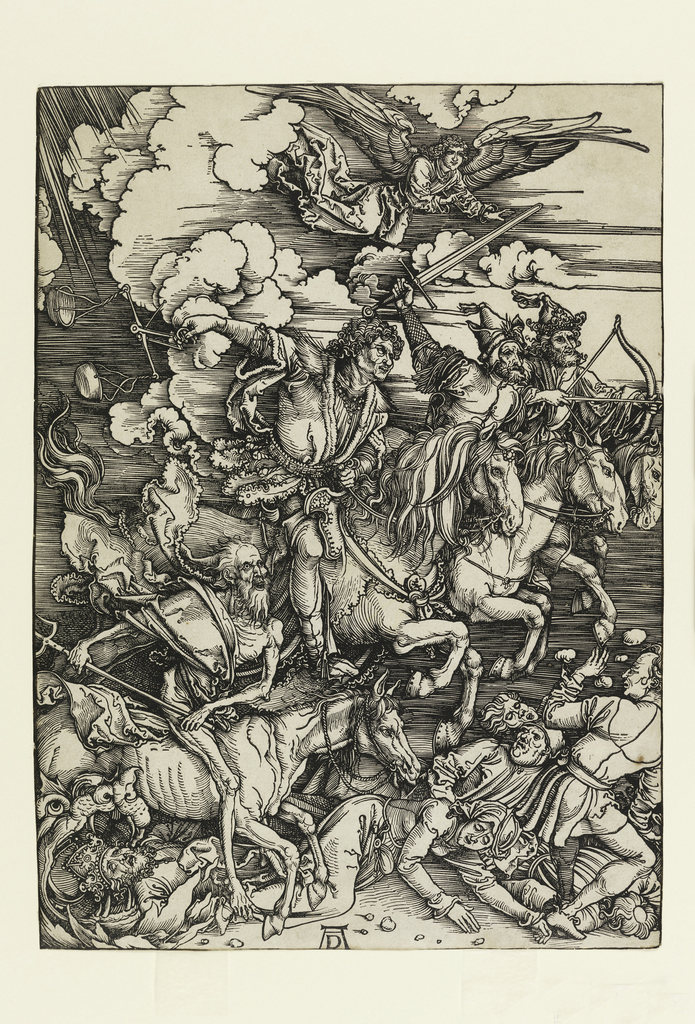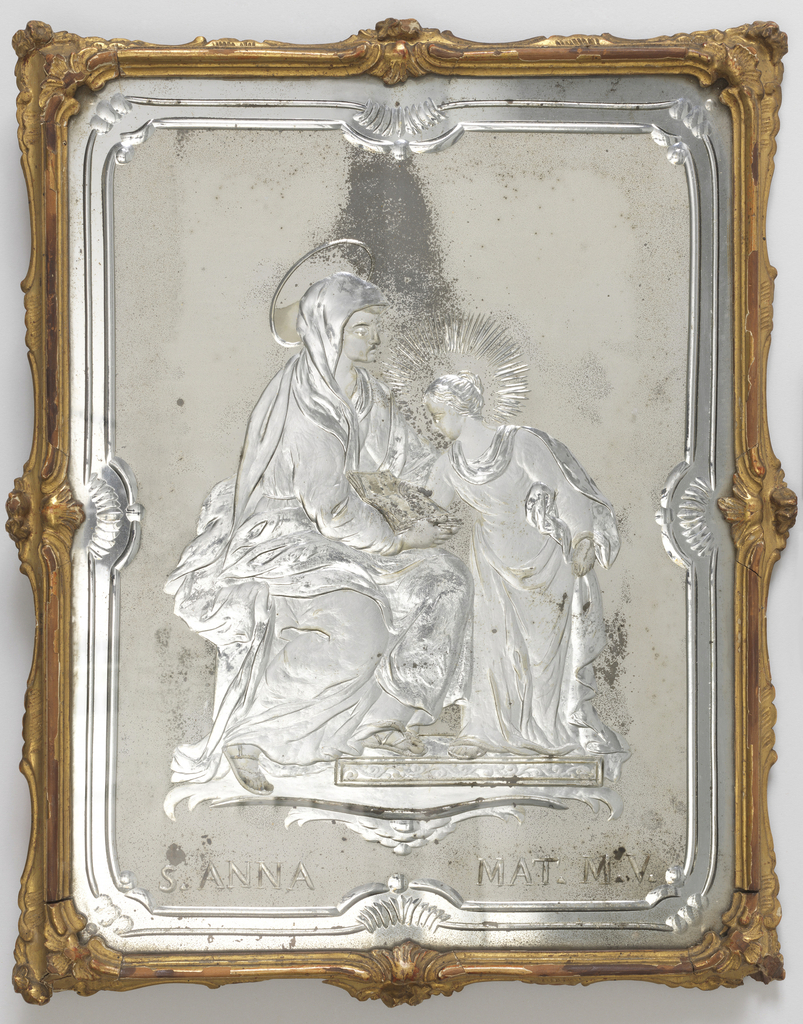Albrecht Dürer (German, 1471-1528) is commonly regarded as one of the greatest artists of the Northern Renaissance. He trained under his father, a goldsmith, and later with Michel Wolgemut, a well-known printmaker and publisher. One of Dürer’s most prominent works is The Four Horseman of the Apocalypse dated ca. 1497-98, a woodcut print that depicts...
Bonad or bonader is a type of folk art once produced in large amounts in southern Sweden in the regions of Dalarna and Småland. At first bonad were paintings on textiles meant to imitate tapestries and the wall hangings of the elite, but in the late 18th century they were produced increasingly as paintings on...
This week’s entries are dedicated to objects featured in the exhibition Thom Browne Selects, currently on view at Cooper Hewitt through October 23, 2016. Venetian glass-making is not the only tradition observed in this engraved mirror, although engraved mirrors were popular there for both domestic and religious use in the seventeenth and eighteenth centuries. This...
The Sukkah City installation at Union Square last weekend was an ideal example of how to use public space in NYC. As the brochure educated: “Biblical in origin, the sukkah is an ephemeral, elemental shelter, erected for one week each fall, in which it is customary to share meals, entertain, sleep and rejoice. Ostensibly,...



